The Sinulog Grand Parade and Ritual Showdown features contingents from various locations who converge to highlight a feast in the honor of Cebu's patron, Santo Niño. The annual cultural and religious festival occurs every third week of January, drawing many locals and international tourists. The festival is recognized as one of the largest cultural and religious events in the Philippines, with the 2025 celebration attracting an estimated 4 million attendees. Since its inception on Jan. 20, 1980, Sinulog has placed Cebu City on the world map. This year’s Sinulog hosted more than 45 dancing contingents. We feel extremely lucky to have been able to attend Sinulog 2025.
Ferdinand Magellan gave Queen Juana a small statue of Santo de Niño (Holy Child of Jesus) after the baptisms of her and King Humabon (Carlos) in 1521. With Magellan’s death during Datu Lapu Lapu’s successful defense of the Philippines against Spanish colonization in the 1521 Battle of Mactan, no continuity in the spreading of the new religion existed until forty-four years later.
The original statue of the Santo Niño.
Establishing Christianity resumed with the Spaniards return with Miguel Lopez de Legazpi as head of a 1565 expedition. His arrival was also met with resistance. As a result, and in true conquistador fashion, Legazpi opened fire on Cebu and burnt the coastal town down destroying 1,500 homes and possibly killing 500 people. In the ruins of this destruction, on April 28, a Spanish mariner Juan Camus found the statue of the Santo Niño. Local legend has survival of the statue as a sign of miracle by the colonizers, and ever since the Catholic religion has revered it as having miraculous powers. A church dedicated to housing Santo Niño was erected at the location where Juan Camus discovered the image. Between 1735 and 1740, the current church, known as the Santo Niño Basilica, was constructed on this site. It is the oldest Roman Catholic church in the Philippines.
Celebrations at the Santo Niño Basilica. (SNB website pic)
Our journey to Sinulog started at 5am, our group of six meeting at the “Stranded Bar” for the 50km trip into Cebu City. Our group included five sailors with boats refitted or repaired at Zeke’s, and led by Mik Mik, who manages the bar and is a key contact at Pinoy Boat Services for all things Cebu.
The journey from Carmen to Cebu City typically takes 90 minutes; however, due to the convergence of approximately four million people at a single location, our driver dropped us off about two blocks from the entrance, approximately 45 minutes before the 8 AM opening. You can do the math. While waiting in line outside the venue for the Grand Parade at Cebu City Sports Center, we had the opportunity to observe numerous participant groups as they assembled prior to the commencement. The props were outstanding, the costumes were magnificent, and the marching bands all performing precision and evident practice.
Participants and props assembling for the Grand Parade.
Vendors were abundant with traditional costumes, food and offering a real fiesta like feel. Cebu blends diverse cultures and lifestyles, merging traditional and modern elements. The early morning streets were alive with colorful floats, higantes (giant puppets), and performers, creating a spectacular display of pageantry.
Linda (SV Serafin) & Kristen (SV Lucille) at the Cebu Sports Center entrance.
Marching bands. One Beat. One Dance. One Vision.
The Sinulog Grand Parade featured a vibrant array of bands and musical performances that add to the festive atmosphere and bring a lot of energy and excitement to the event. Each of the contingents from different cities, regions and even high schools participated and brought their unique musical and dance performances. In the days and weeks leading up to Pit Senor, we frequently heard and saw bands and groups of drummers beating out the theme.
While the bands and performer dedication alone cannot be understated, you really have to consider the costumes, props, band practice and choreography to understand the monumental effort that goes into Sinulog. Most of the representatives are from individual Barangays (municipalities), with the smallest representing high schools and parishes.
Belinda adorned with the Sinulog tradition headdress.
The festival began with a re-enactment of historical events related to the baptism where Rajah Humabon was given the Christian name Carlos, and his wife, Hara Humamay, received the name Juana. After the baptism, they reenacted presenting the statue of Santa Nina.
The baptism reenactment.
While the Grand Parade remains a cultural celebration at its heart, it is a performance with a competitive nature, with contingents from various regions of the Philippines joining the festivities to vie for recognition in organized contests. This blend of tradition and modernity ensures the Sinulog captivates both locals and tourists alike.
The opening ceremony.
The Sinulog has five separate components, the Fluvial Parade in the waters between Mactan and Cebu City, Festival Queen crowning, Sinulog sa Kabataan (Nurturing the Next Generation), The Solemn Procession held at the Santo Niño Basilica and the Grand Parade which we attended. Sinulog Grand Parade is the highlight of the festival, featuring dazzling street performances by participants in elaborate costumes adorned with sequins, feathers, and vibrant fabrics. Dancers perform the traditional Sinulog steps while moving to the thunderous rhythm of live music. One Beat, One Dance, One Vision.
One of the 40+ participant groups.
Among the highlights of the 2025 Sinulog festival were the magnificent higantes, or giant puppets 10-12 feet tall, that towered over the crowds, adding a touch of whimsy and grandeur to the celebration. Highlighting the puppeteers' skill as they danced and moved on stage.
The giant higantes figures dance their way across the stage.
It was difficult to choose a “best” performance. There is so much dedication put into the event. The common theme is a combination of religious devotion, Filipino heritage, and the story of the Filipino people's acceptance of Christianity. A few of the performers chose to enter in an Interpretive category with significant symbolism on the marine environment. Carcar City, Cebu, population 136K, emerged as the big winner in the Sinulog-based category, taking home three million pesos in prizes and the additional 1.5 million pesos subsidy from the Cebu City Government for all out-of-town contingents. Carcar City also won Best in Musicality. The complete 6-minute performance by Carcar City can be viewed here.
Carcar City, 1st place.
Bais City, Negros Oriental, claimed victory in the Free Interpretation category, and 5th place overall. As a first-time Sinulog participant, the Bias City contingent of 400 members delivered a notable performance.
Bias City, Negros Oriental, Visayas
Danao City, nearest location to where we are residing here on Cebu, after seven years of non-participation in the Sinulog ritual showdown, Danao City scored a remarkable comeback with a 4th place victory.
Danao City, 4th place.
Stopping for a quick photo with performers as we departed the Grand Parade.
The Sinulog Festival has evolved into a major tourist attraction. The Grand Parade is an enthralling day-long event that attracts four million people made up of locals and tourists, displaying a harmonious blend of tradition and modernity. An event we highly recommend!





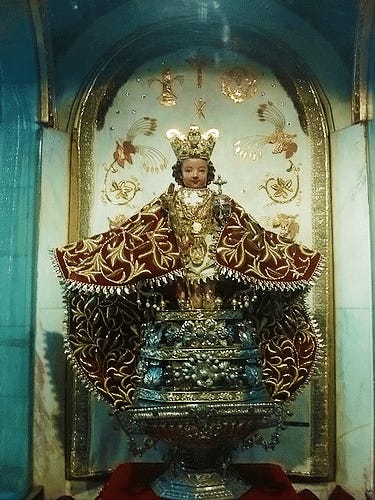
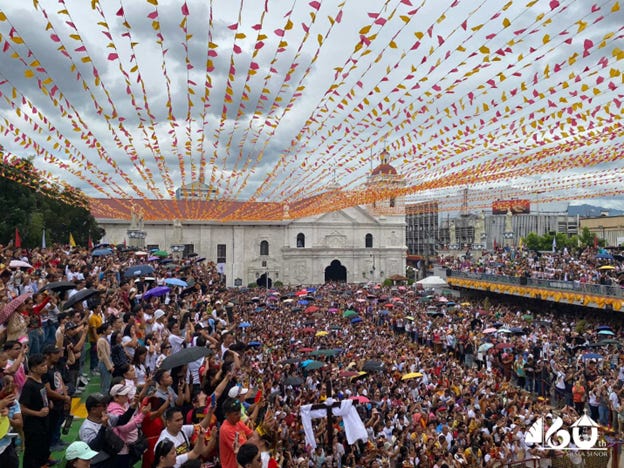
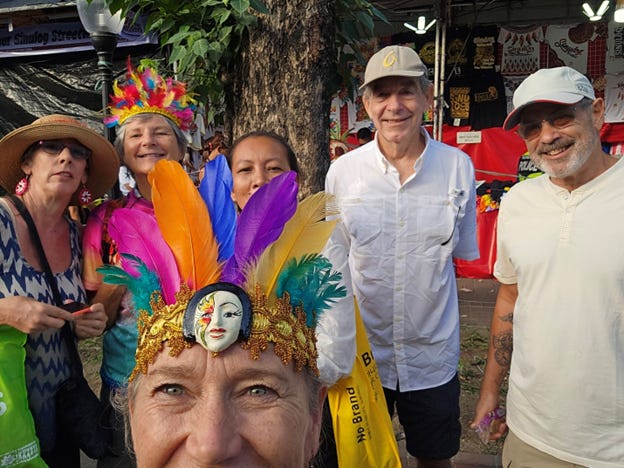
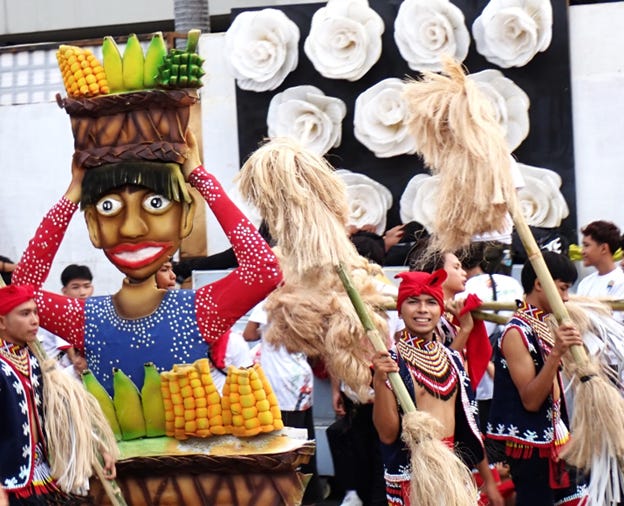

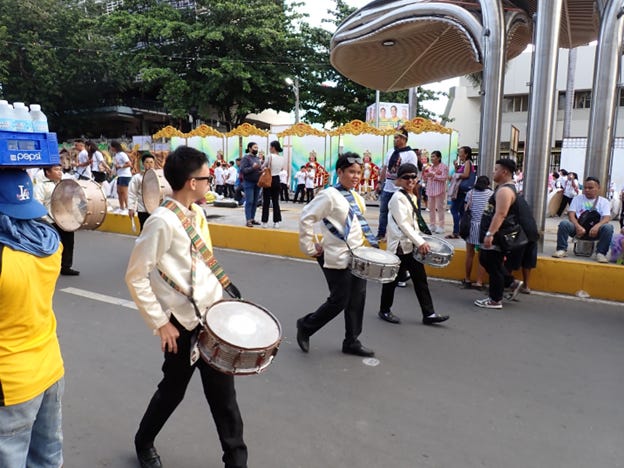
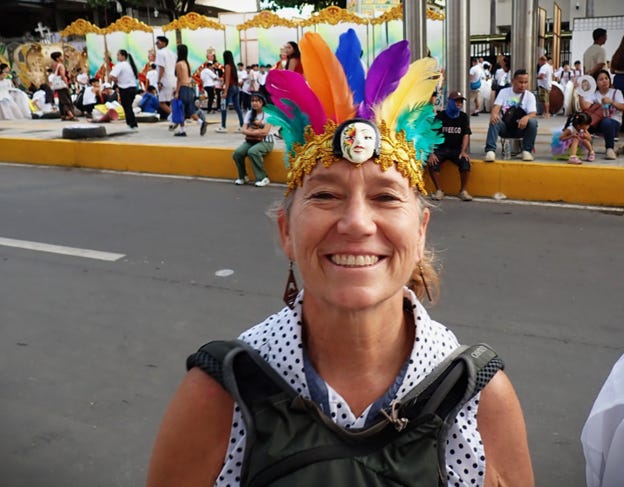

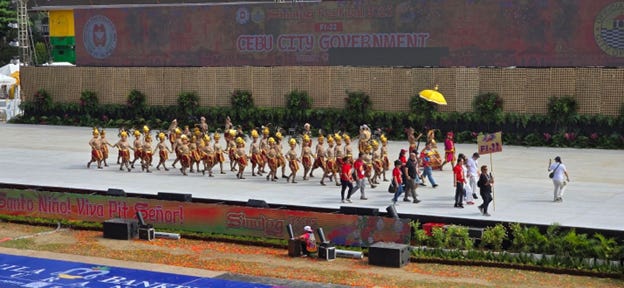

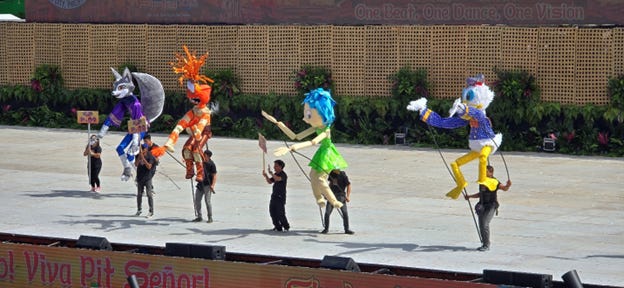
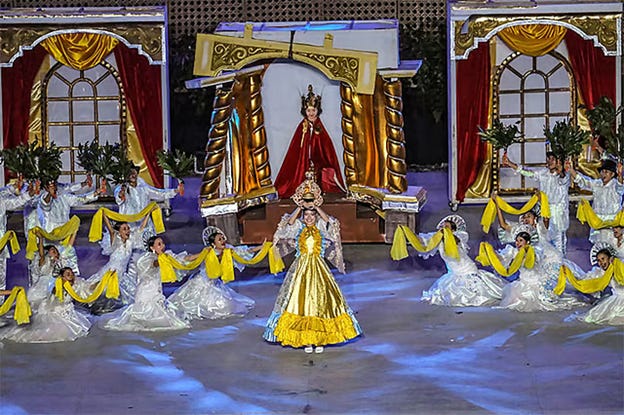
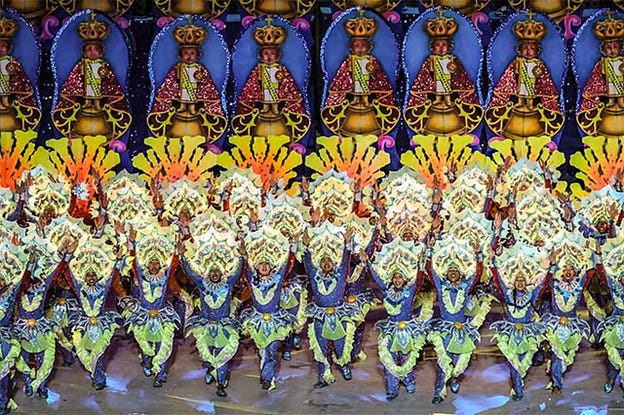
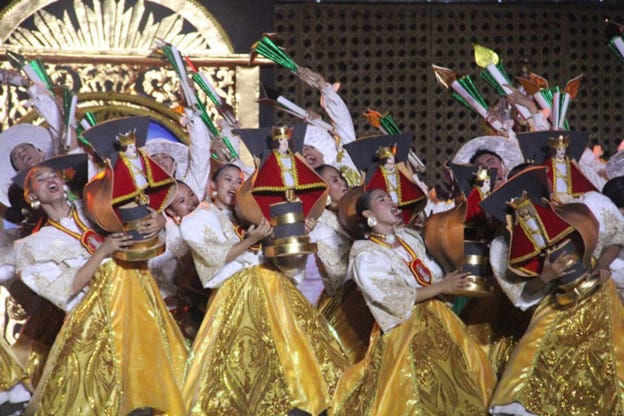
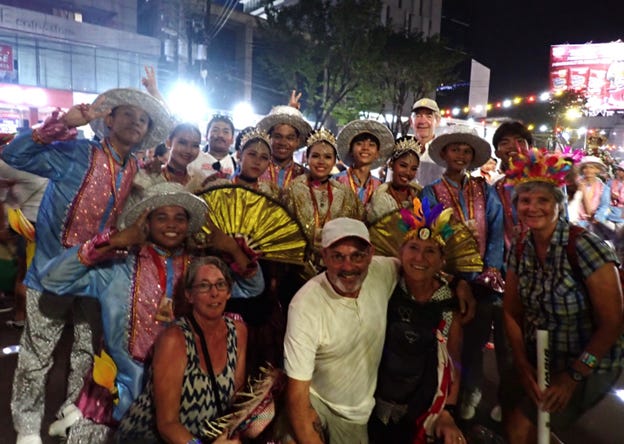
A lovely, and informative, recounting of such a lavish festival that you recently experienced. Thanks so much for sharing!! Diana